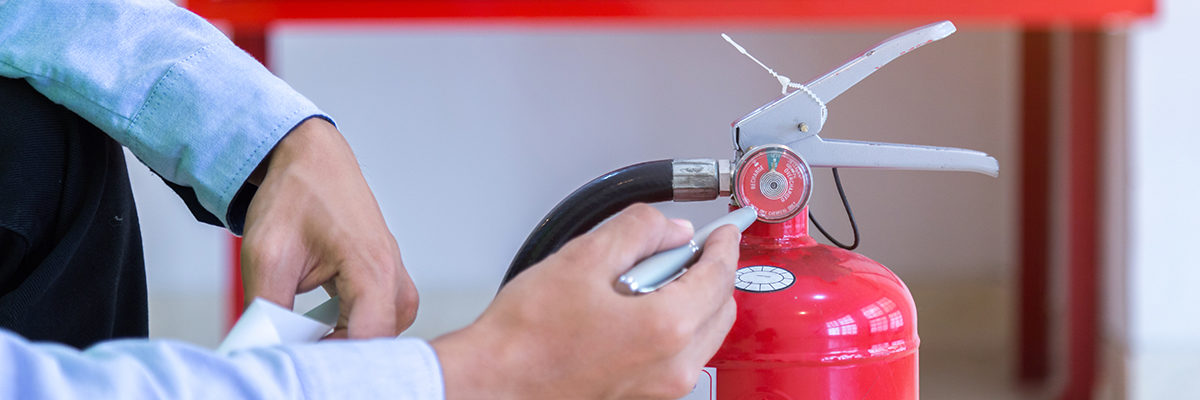This information relates to the legal right to carry out a health and safety inspection of the workplace.
The law
Any accredited Health and Safety Representative has the right to carry out a health and safety inspection of the workplace at least every three months.
Regulation 5(1) of the Safety Representatives and Safety Committees Regulations 1977 3rd Edition 1996 (the SRSC Regulations) states that: ‘Safety Representatives shall be entitled to inspect the workplace or part of it if they have given the employer or his representative reasonable notice in writing of their intention to do so and have not inspected it, or that part of it, as the case may be, in the previous three months; and may carry out more frequent inspections by agreement with the employer.’
The SRSC Regulations set out the appointment, functions and rights of the Health and Safety Representative.
Frequency of visits
The NASUWT recommends that Health and Safety Representatives undertake a routine health and safety inspection of the workplace once per term.
However, Health and Safety Representatives also have the right to an additional inspection if there has been a dangerous occurrence or a potential hazard emerges.
There are a number of types of inspection that can be carried out by a Health and Safety Representative.
These are listed below.
- Inspections as a result of the contraction of a reportable disease.
- Regular termly inspections of the workplace.
- Inspections as a result of dangerous occurrences.
- Inspections as a result of a change in the conditions of work.
- Inspections as a result of the receipt of new information.
- Inspection of documents.
Inspection arrangements
Inspections do more than just help identify potential hazards. They also show NASUWT members that action is being taken.
The Health and Safety Representative should:
- advise the employer of their intention to hold an inspection and agree a mutually convenient date; and
- inform the representatives of other unions and NASUWT members of their intention to hold an inspection as they may wish to raise specific issues.
Duration of inspections
Schools and colleges vary in size and layout. All have their own features and potential problems. Sufficient time should be allowed for each individual inspection, including preparation and writing up.
If the site is large or appears to have a large number of problems, it is best to break the inspection up into manageable areas and do one area at a time, rather than try to inspect the whole site in one operation.
Guidance
The NASUWT does not have a prescribed list of areas that should be inspected as each school or college has individual needs. Health and Safety Representatives may find it useful to devise their own guidance for their school.
Take the Risk Out
The NASUWT resource Take the Risk Out below explains the key aspects of risk assessment, including the management of health and safety and the risk assessment process. This resource forms an important part of the NASUWT Health and Safety Stage 2 Course and includes the legislation and guidance relevant to health and safety inspections.
Inspection forms
A local authority may provide sets of self-carbonised or electronic inspection forms that may be obtained from their offices or from the employer. The NASUWT’s model inspection report form can be found in the NASUWT Health and Safety Representatives’ Handbook.
Distribution of reports
The following should receive a copy of the inspection report form:
- the employer;
- the safety officer of the local authority, or academy trust where applicable;
- the chair of the governing body; (where applicable) 4. the teacher governor; (where applicable)
- a copy for the NASUWT notice board;
- a copy to be retained by the Health and Safety Representative.
Responses to inspection reports
Most local authority inspection report forms have a section where the employer may write a response to any concerns raised by the report. Where the employer fails to acknowledge a concern and say how the matter is to be addressed, the Health and Safety Representative should challenge the failure. In the event of resistance, the matter should be referred to the NASUWT Representative or the NASUWT Local Association Secretary for their intervention.
This is important, particularly where a serious hazard has been identified.
Further information
Health and Safety Representatives carrying out inspections should refer to the NASUWT Health and Safety Representatives Handbook, which is available to download from the Health and Safety page.
The Health and Safety Executive (HSE) provides advice on inspections in the Health and Safety Representatives section of the HSE website at www.hse.gov.uk and the Five Steps to Risk Assessment leaflet can be downloaded from the HSE website (pdf).
Hazards and accidents or ‘near misses’ should all be reported. All accidents should be reported, on the appropriate form, which should be copied to and checked by the NASUWT Health and Safety or Workplace Representative.
Do not consider any accident minor or trivial. A medical opinion or advice should also be sought. Possible future claims can be seriously hindered by not reporting such accidents.
Further information on reporting accidents is available in the NASUWT Reporting Accidents leaflet.
Where an NASUWT member suffers any injury, you should telephone the NASUWT free Legal Advice Line on 0808 100 2221.
Further advice and guidance
Further help and advice can be obtained from your NASUWT Health and Safety Representative, Local Association Secretary or Health and Safety Co-ordinator.
For additional advice and support, contact your NASUWT Local Association or Regional Centre in England or the National Centres in Northern Ireland, Scotland and Wales.

